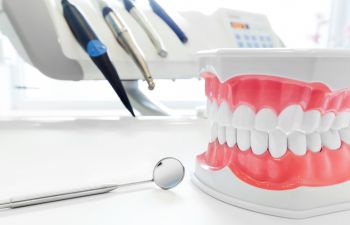
How long have you been using your current toothbrush? With so much on your schedule, it is easy for time to slip away when it comes to changing out your oral hygiene tools. However, there are important reasons why the ADA recommends that you replace your toothbrush every 3–4 months or when the bristles become frayed. Understanding why you must trade in your old toothbrush for a new one may help you stay on top of the task.
Germs – This is perhaps the most alarming and convincing reason to stay on top of your toothbrush’s condition. According to a study at the University of Manchester in England, the average toothbrush can contain 10 million or more bacteria, including E. coli and Staph! In addition, at any given time there are 100 to 200 species of oral bacteria living in your mouth, which can end up on your toothbrush at the end of the day. It is not necessary to replace your toothbrush daily or weekly of course, but it is important that you clean your toothbrush thoroughly after each brushing session to rinse off these numerous germs. If you are sick, go ahead and throw out your toothbrush to prevent reinfection.
Ineffective – No matter how perfect your brushing technique is, if your toothbrush is worn down with frayed bristles, it simply can’t do its job. You need to have a toothbrush with sturdy, upright bristles in order to scrub away plaque and clean in the crevices and grooves of your teeth. If you have kids, you will want to check out their toothbrush sooner than 3 months. Children have a tendency to be a little rougher on their toothbrush and even chew on the bristles.
Storage Matters
Another factor worth considering when it comes to the health of your toothbrush is where you keep it. In an ideal world, it needs to be stored upright and in a place that it can completely dry between brushing sessions. Also, it must be kept at a distance from your toilet. “If your toothbrush is stored within three feet of the toilet, the droplets of water that spray up after you flush remain airborne long enough to settle on surfaces throughout the bathroom—including your toothbrush—which means you may be cleaning your teeth with what you thought you flushed down the toilet,” says Charles Gerba, Ph.D., a professor of microbiology at the University of Arizona.
There is a lot of responsibility riding on your toothbrush, so make sure you are giving it the proper attention it needs to keep your teeth and gums healthy. The health of your mouth can make a profound impact on your overall health. If you need to, go ahead and buy a new toothbrush and mark it on your calendar for when you’ll need to replace it.


 1297 Hembree Rd Suite 202
1297 Hembree Rd Suite 202